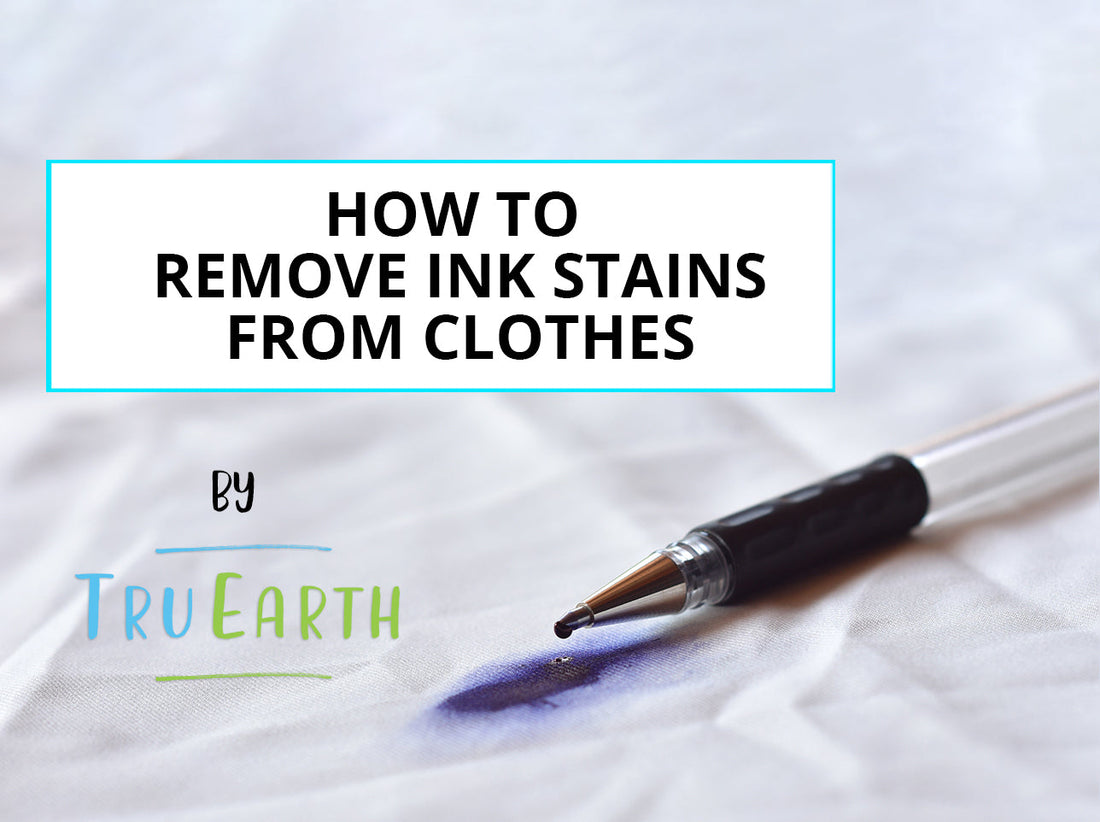Toen ik student was, leek het wel of ik om de week een medeleerling aan de andere kant van de klas hoorde kreunen, om vervolgens te zien dat ze met inkt onder hun handen zaten. Of het nu gaat om iemand die gedachteloos op een pen knabbelt tijdens een college, een balpen in een zak die onopgemerkt bloedt of een "kunstzinnige" peuter die een canvas van zijn kleren maakt, inktvlekken zijn rommelig en irritant. Het goede nieuws? Als je snel handelt, kunnen de meeste vlekken verwijderd of aanzienlijk verminderd worden.
Waarom lekken pennen eigenlijk?
Het antwoord heeft te maken met lichaamswarmte.
In tegenstelling tot pennen die in bureaus of aktetassen worden bewaard, geven mensen die een schrijfinstrument langere tijd vasthouden of er een in hun zak bewaren warmte af aan het instrument. Naarmate de temperatuur stijgt, neemt de viscositeit van de inkt af, wat betekent dat deze "vloeibaarder" wordt. Hierdoor kan de inkt gemakkelijker uit de balpen lekken dan anders het geval zou zijn geweest. Een vlek kan snel groeien, vooral wanneer de hoek van het instrument dit toelaat, en inkt kan uit de pen worden getrokken door het absorptievermogen en de textuur van de stof.
Dat verklaart waarom je professor een nerdy zakbeschermer draagt, toch?
Soorten veelvoorkomende inkt
Om de vlek te kunnen behandelen, is het handig om de samenstelling van de verschillende soorten inkt te kennen.
Balpeninkt : De ingrediënten van balpeninkt zijn een goed bewaard handelsgeheim, maar ze bevatten allemaal kleurstof (of pigmentdeeltjes) die zijn opgelost in "een oplosmiddel van olie of water". * Penmakers voegen vervolgens diverse chemicaliën toe om de bruikbaarheid te verbeteren. Zo wordt er bijvoorbeeld vetzuur toegevoegd voor smering, zodat de balpen in de huls kan draaien zonder verstopt te raken.
Inkt op waterbasis : Minder populair dan balpennen, gebruiken vulpennen een dunne inkt op waterbasis die (goed nieuws) gemakkelijker te verwijderen is. Je vindt ook inkt op waterbasis in een aantal viltstiften en stiften voor kinderen.
Gelpeninkt : Bevat poederpigmenten die zijn opgelost in een gel op waterbasis. *
Inkt voor permanente markers : Sharpies bevat een kleurstof, oplosmiddel en moeilijk oplosbare hars. *
Gouden regels voor het verwijderen van vlekken
Je hebt een inktvlek ontdekt. Wat nu?
Volg eerst de belangrijkste regels voor het verwijderen van vlekken: behandel met spoed, ga voorzichtig met het kledingstuk om te voorkomen dat de inkt op andere plekken terechtkomt, en vermijd blootstelling aan hitte/zon. Vlekken hechten zich na verloop van tijd dieper, dus het is belangrijk om te beginnen terwijl de vlek nog vochtig is.
Hoe je in 8 eenvoudige stappen een inktvlek verwijdert
Stap 1 : Bepaal het type stof. Controleer het waslabel om te zien hoe kwetsbaar het textiel is. Zijde heeft bijvoorbeeld speciale eisen voor vlekverwijdering .
Stap 2 : Verzamel een oplosmiddel, zoals ontsmettingsalcohol, handontsmettingsmiddel of haarlak.
Stap 3 : Dep de overtollige inkt op met een schoon, absorberend stuk papier, zoals een papieren handdoek of servet. Let er vooral op dat u de inkt niet dieper in de textielvezels wrijft.
Stap 4 : Voer een test uit op kleurechtheid. Kies een klein, minder of niet zichtbaar deel van het kledingstuk om het oplosmiddel op aan te brengen. Wacht maximaal drie minuten voordat u het met een papieren handdoek dept om te zien of de oorspronkelijke kleurstof van het kledingstuk afgeeft. Zo niet, ga dan verder met de behandeling. Als de kleur afgeeft, stop dan met het oplosmiddel en breng het kledingstuk naar een stomerij.
Stap 5 : Leg een schone, oude handdoek of keukenpapier onder de vlek* en breng het oplosmiddel op de vlek aan. (*Sla deze stap niet over! Pigment of kleurstof die door het oplosmiddel wordt weggespoeld, kan uitlopen en de inkt op andere delen van het item afgeven.)
Stap 6 : Spoel af met koud water.
Herhaal dit indien nodig of totdat u merkt dat het aanbrengen van het oplosmiddel geen voortgang meer boekt.
Stap 7 : Als de inktvlek niet verdwenen is, breng dan een geconcentreerd wasmiddel aan en laat het vijf tot tien minuten intrekken.
Als je een Tru Earth eco-strip gebruikt, scheur de strip dan eerst in kleine stukjes en doe deze in een kommetje. Voeg een eetlepel (15 ml) heet kraanwater toe om de strip op te lossen. Roer met een lepel tot een pasta en voeg indien nodig kleine hoeveelheden water toe.
Plaats het kledingstuk, zonder het wasmiddel uit te spoelen, in de wasmachine (als het waslabel dit toestaat) en gebruik daarbij de hoogste watertemperatuur die geschikt is voor het type stof.
Stap 8 : Inspecteer de vlek na afloop van de wascyclus. Als de vlek aanhoudt, ga dan terug naar stap 5 en was het kledingstuk opnieuw.
Speciale opmerking : Doe het kledingstuk pas in de droger als u klaar bent met het behandelen van de vlek; de hitte van de machine zorgt ervoor dat eventuele resterende inkt wordt “gefixeerd”.
Als niets anders helpt, behandel de (natte) vlek dan met een speciale inktverwijderaar zoals Amodex.


